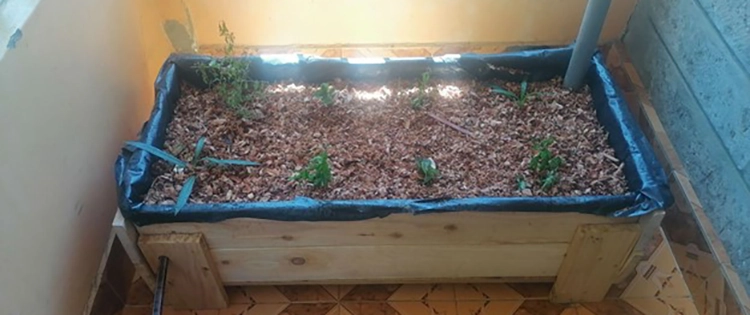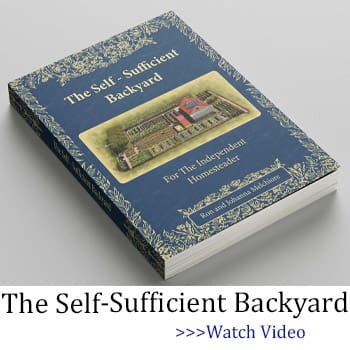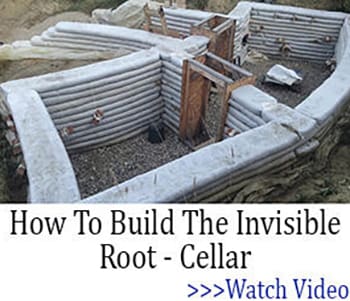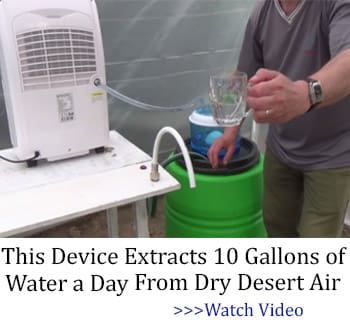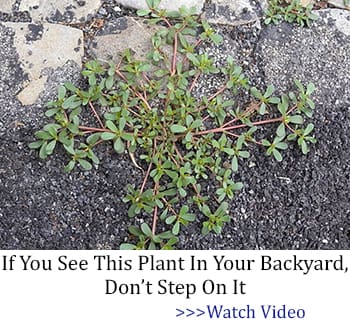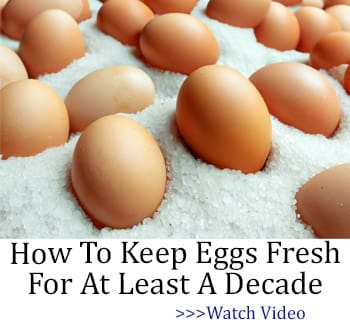A self-watering raised garden bed is a type of garden bed with a built-in watering system that provides a consistent water supply to the plants. It is also a convenient planting option for gardeners who want to ensure their plants receive adequate water without regular manual watering.
This garden improves drainage and soil aeration. It’s perfect for a small balcony or backyard.
By building a self-watering raised garden bed in a grid pattern, you can save up to 50% on water. Plus, it keeps the soil moisture just right for your plants.
In short, a self-watering raised garden bed is a smart choice where water and resources are limited.
Here’s How a Self-Watering Raised Garden Can Be Advantageous in a Grid Situation:
Water Conservation
A self-watering system will efficiently use water by delivering it directly to the plant roots conserving water in a grid-down scenario when the water supply is scarce or rationed.
Extended Watering Intervals
The self-watering mechanism provides a consistent supply of moisture to the plants, allowing you to extend the intervals between watering sessions.
Self-Watering Raised Garden Can Reduce Manual Effort
With a self-watering system, you don’t need to water your plants regularly, saving you time and physical effort, and allowing you to focus on other essential survival tasks or conserve energy.
Plant Health And Food Security
In a grid-down situation, a self-watering raised garden bed keeps your plants watered. This helps them grow healthy and boosts food production.
It can play a key role in your food security and self-sufficiency during an emergency.
Water Storage Options for Self-Watering Raised Garden Beds
Some self-watering garden beds may have larger water reservoirs or the capacity to connect to external water storage containers, allowing you to collect and store rainwater to replenish the reservoir and extend the available water supply further.
Portability
If your self-watering raised garden bed is portable, it’s a big advantage during a grid-down situation. You can move it to a sunnier spot or shelter it during extreme weather to protect your plants.
How to Build a Self-Watering Raised Garden Bed: The Step-by-Step Process
Here are the steps I took to build an economical self-watering raised garden at home.
Gathering The Necessary Materials
The most common materials to use will include wood, screws, 8mm black polythene paper, a hacksaw, nails, tape measure, gardening soil, compost, mulch, irrigation tubing/perforated PVC, and a piece of ¾-inch hose.
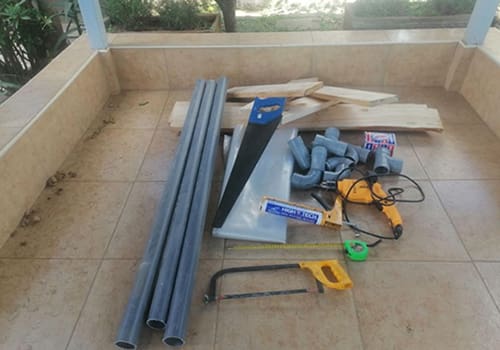
In my case, I used the readily available untreated cedar for the bed frame to increase its durability. However, you can still use pressure-treated lumber or a large food-grade plastic container cut into two halves.
Measuring The Desired Dimensions Of The Raised Garden Bed
Before measuring for your raised garden, take a look at your landscape. Consider the space, number of trees, and paved surfaces. This will help you figure out how much material you need.
For my garden, I used 3×5 feet (1×1.5 meters) long 6×1 inch boards since I planned to install it on the balcony. But if you have more space, feel free to use longer boards.
Cutting The Boards To Size
In this step, I used a handsaw to cut the sides of the raised garden bed frame. A handsaw is convenient because it does not need electricity—a perfect solution in a grid-down situation.

DIY Self-Watering Raised Garden Beds: Attaching The Sides
Next, I assembled the frame by screwing the corners together. I used screws instead of nails to make the frame more sturdy. If you want, you can also create a grid pattern to section off parts of your raised garden bed for different plants or vegetables. This is especially helpful if you’re building multiple tiers within the same bed.

Choosing A Suitable Location For The Garden Bed
The next step would be choosing the ideal area with ample sunlight and easy access to water. Also, you should move the project to that location because the garden can be bulky or heavy at this stage.

Afterward, I attached the base of the bed. I preferred a used blockboard because it was firm and could carry the weight of the gardening soil, plus the PVC water reservoir.
Self-Watering Raised Garden Beds: Laying Down A Layer Of Polythene Paper
To prevent water from leaking, I lay a sturdy polythene paper to create a water-tight seal inside the garden bed.

Note: Avoid puncturing holes in the polythene paper to prevent leakage. Instead, use tape to secure the polythene along the garden bed. Also, it is easier to begin at the sides before finishing off at the corners.
It would be best to use thick polythene paper (probably 8mm or heavier) to increase its durability.
Filling The Garden
Once the frame and the polythene paper are in place, add a thin layer of medium-sized gravel (without jagged edges) to fill the base to the desired level—probably 6 inches high. But when filling in the bed, remember to leave enough room for the irrigation hoses and tubes.

Note that gravel prevents the perforated 2-inch PVC irrigation pipes from blocking after adding gardening soil and dirt to the garden bed.
Self-Watering Raised Garden Beds: Attaching And Connecting The Irrigation System
I used perforated 2-inch PVC drain pipes to create a simple irrigation system. However, you can also use alternatives like a corrugated or perforated hose. Additionally, if you have more space, you can opt for larger diameter irrigation tubes, depending on your setup.

I also included a water inlet and outlet on both corners of my setup.
I made a ¾-inch hole on one side of the bed, then attached a hose to drain the excess water from the irrigation system.

Adding Gardening Ingredients
I filled the garden with the right mix of compost and manure to enrich the soil and nourish the plant roots. If you’d like, you can add a thin layer of landscape fabric between the gravel and the gardening soil to create a barrier that prevents the irrigation pipes from clogging over time.

Note: You can also add mulch around each plant to help retain moisture during long periods of drought.
DIY Self-Watering Raised Garden Beds: Final Step
Finally, place each plant in its designated spot within the raised garden bed and water it well until it’s established. I filled the irrigation system with enough water until it started flowing through the overflow hose.
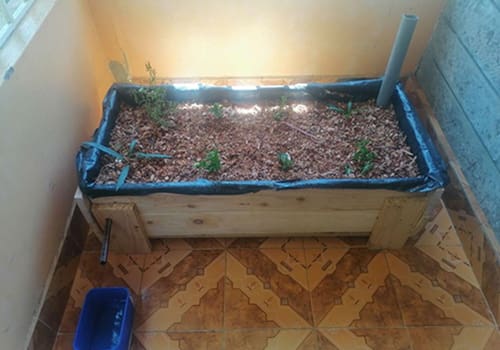
Note: The water from the bottom of the bed/reservoir will sock in the soil, and the plant roots will have enough water all season.
With proper care, your self-watering raised garden bed will provide homegrown vegetables and herbs all season long!
In a grid-down scenario, it’s important to have backup plans and alternative water sources for growing your favorite veggies and fruits. A self-watering garden can solve watering problems, saving you both time and planting costs.
In such a situation, think about rainwater collection, water filtration, or storage containers to ensure a steady water supply for your garden and other survival needs.
Finally, learn about drought-resistant plants, companion planting, and water-conservation techniques to further boost your garden’s productivity in a resource-limited environment.
The article first appeared here.
This Device Extracts 10 Gallons of Water a Day From Dry Desert Air (Video)
How To Preserve Food Without Electricity
7 Projects That Turn You Into A Self-Sufficient Homesteader
Raised Bed VS In-Ground Gardens
